Scott Adams likes to provoke people. On occasion, like today, he writes something that provokes other people. He makes a good case that Donald Trump's presidential campaign is a practical joke:
The magnificent part of this whole thing is that he's putting no effort whatsoever into concealing his prank. That's what I love about the guy. He knows that no level of clownery in a field of clowns will single him out as the one clown that doesn't really mean it.
He's a graduate of the Wharton School, which means his intelligence is in the genius range. He's a world-renowned businessman with attention to details. He's also famous for a trademark form of self-parody that has boosted his brand for decades. There isn't the slightest chance that this man hasn't looked at the birther evidence. He knows the President of the United States is American. That's the hiding in plain sight part of this prank. It isn't the least bit credible that Trump thinks the birther issue is real.
Some of you are thinking he's gone too far with the joke. Or maybe he went too far when he said we should take Iraq's oil by force as payment for a war they didn't ask for. This is not a man who thinks he might someday debate serious politicians in a public forum. This is a man who is winking at the camera and daring you to see the obvious.
Now, other than the silly assertion that he's smart because he went to the Wharton School (it's not Fuqua, after all), Adams hits a stand-up double with the post. I'm convinced.
Wink.
I mentioned earlier today that I've got a new film scanner, which makes scanning negatives leaps and bounds easier than my old flatbed scanner did. As threatened promised, I've started sending people some copies. But unless someone spontaneously grants me publication permission, I'm going to restrict myself to posting only shots of subjects that have no privacy interests. Like this creek, for example:
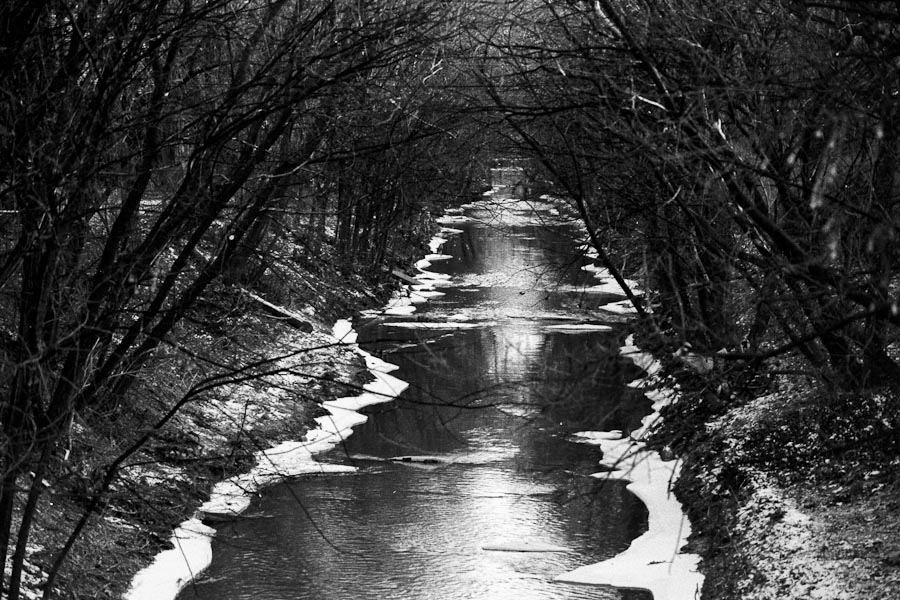
My notes have that one at the Walters Ave. bridge in Northbrook, Ill., looking south, mid-November 1985.
I am neither a beaver nor a dog, so I don't get to sleep through the winter nor do I get to lounge around all day and eat free food every night.
Which is all a long way of saying my blogging velocity might drop a little for the next week or so.
I've also gotten a new film scanner, and I've started scanning some of my negatives from the 1980s and 1990s. So if you went to school with me, you might get some frighteningly old photos over email in the next few weeks. I've discovered, after calibrating the scanner, that Kodak Tri-X and T-Max held up really well while Fuji FR-1600 did not. Fuji films had a reputation in the 1980s for weak magenta dyes, and after 20 or 25 years they've gotten even weaker, yielding greenish photos. The Kodak VR-100 looks pretty good.
Of course, a lot of the Tri-X that I shot from 1985 to 1992 came in 400-foot bulk packs, which I cut by hand and rolled into reusable film cans, and usually developed myself. The scanner dutifully records all the flaws, streaks, pits, and developing errors that never quite showed up on the proof sheets.
I met one of my oldest surviving friends in York this afternoon, thanks to the fast and cheap railways they've got in the UK. It's one thing to stay in a hotel built before my home town was founded; it's quite another to walk along a wall built over a thousand years before that.
First obligatory photo: York Minster, which opened as a small wooden church in 627 CE, and achieved this form somewhere around 800 years ago:
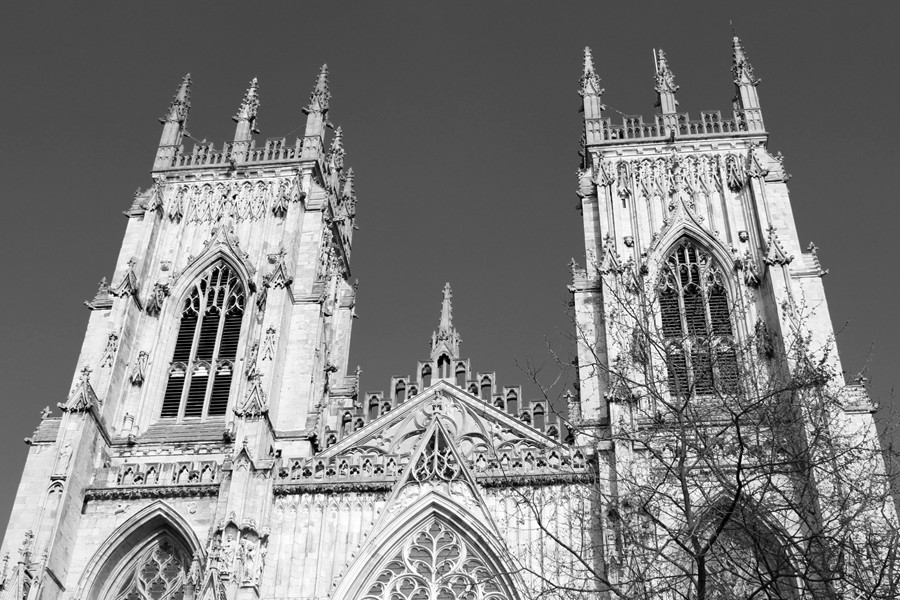
We also took advantage of an open house hosted by the York Glaziers Trust, who work to restore the stained glass at the Minster. I snapped this before seeing the "no photographs" sign:
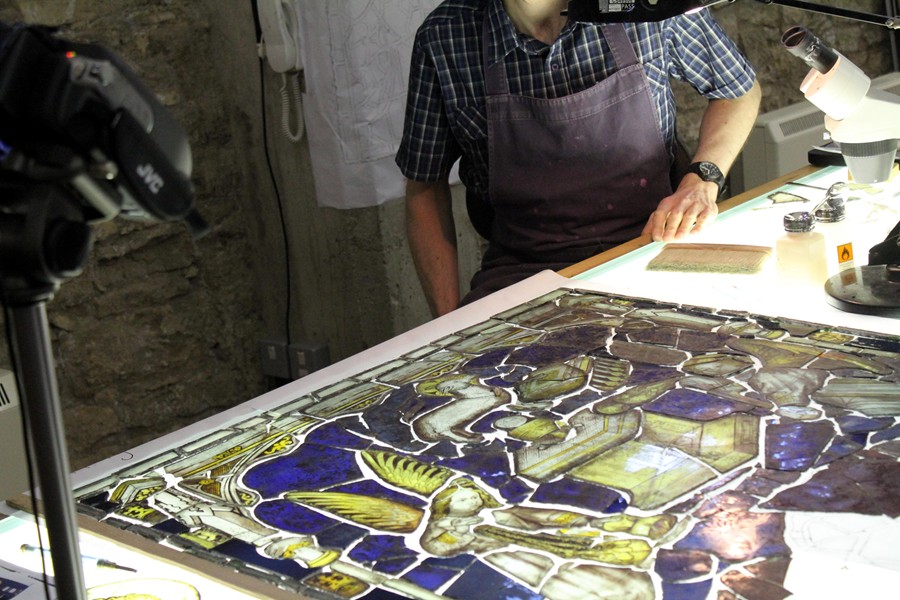
That's one panel of the 120 or so that make up the east wall of the Minster. John Thornton installed the windows about ten years before Columbus got lost in the Atlantic, or about 300 years before my country came into being. My friend and I both wondered if they'd ever dropped a piece of 15th-century glass, but we were both too chicken to ask the conservationists.
Getting out of York required jumping forward to the last few years, when York restored its Victorian-era railway station:
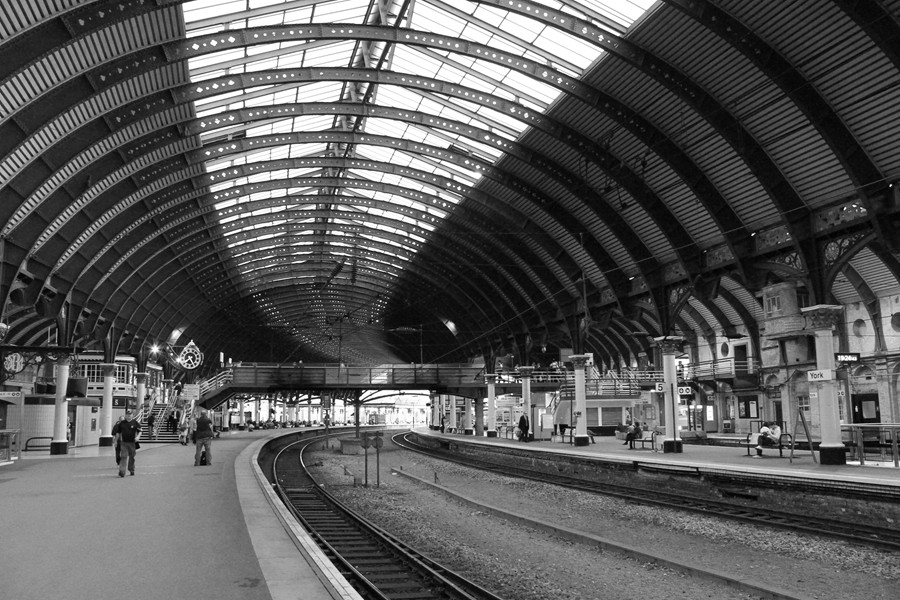
I've got one more day in the Land of Uk, so tomorrow look for some nighttime shots.
(About this post's title: for some reason I keep hearing the Swedish Chef in my head.)
I'm really, really tired, but I just had to post this:
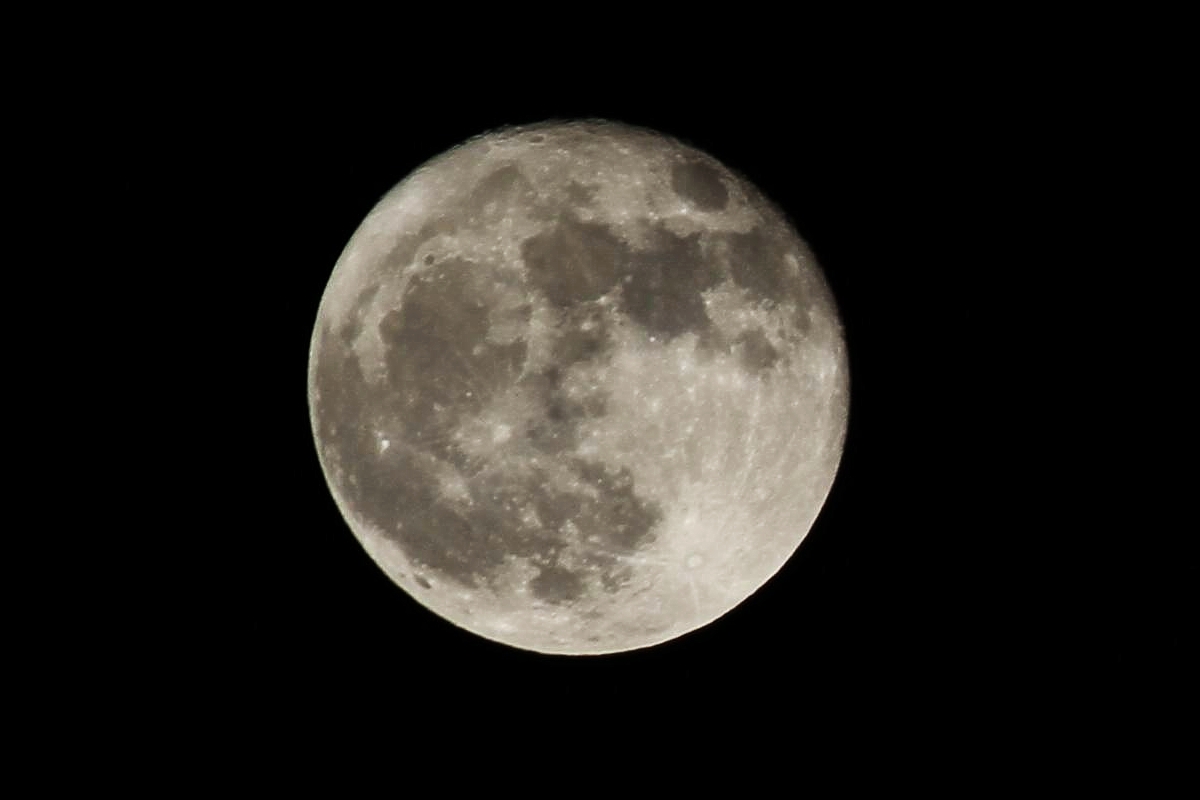
Did I mention how much I love my new camera?
In fairness, my old camera could have done that, too. It's a 200mm lens on a 1.6x digital image chip, ISO-100, f/5.6 at 1/500. My old camera wouldn't have had the detail the new one has, but really, the trick to the shot was the tripod I've had since 1983. (Seriously.)
The moon is actually pretty bright. Its albedo—the amount of light its surface reflects—is about 9%, or about half of an average surface on Earth. So in full sunlight it should read about 50% of the light that it would read at noon here, and, would't you know, it does. In noon sun in the park I would expect about the same exposure. So in reality, the moon is a much duller grey than this photo shows.
OK, I'm off to sleep now. Tomorrow I'll reveal what became of my car while I was in Connecticut.
The low-light performance of my new camera astounds me. I took an hour-long hike around Midtown Manhattan right around sunset. Cranking the camera up to ISO-6400 allowed me to do this:
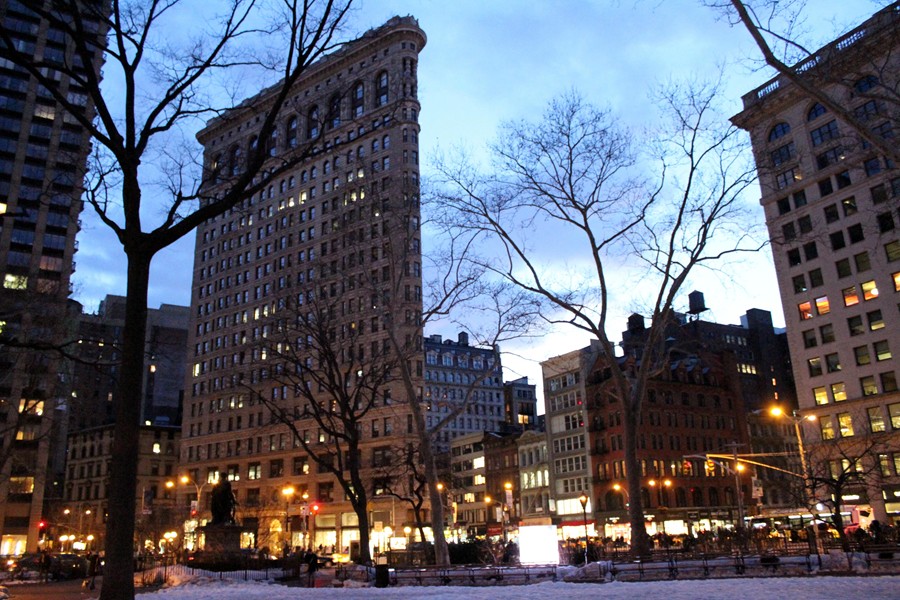
That's f/3.5 at 1/30, using available light. Sorry about the nerd moment but: day-um.
Another one, in Washington Square:
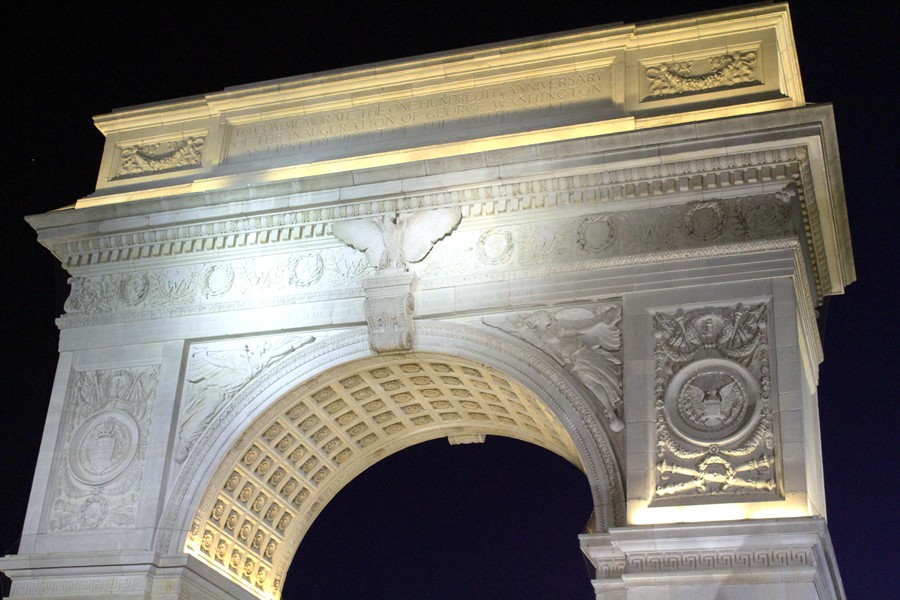
ISO-3200, f/5.6 at 1/30. Again: day-um.
To celebrate, I had a greasy slice of New York pizza from a corner pizzeria for dinner.
Ain't she purdy?
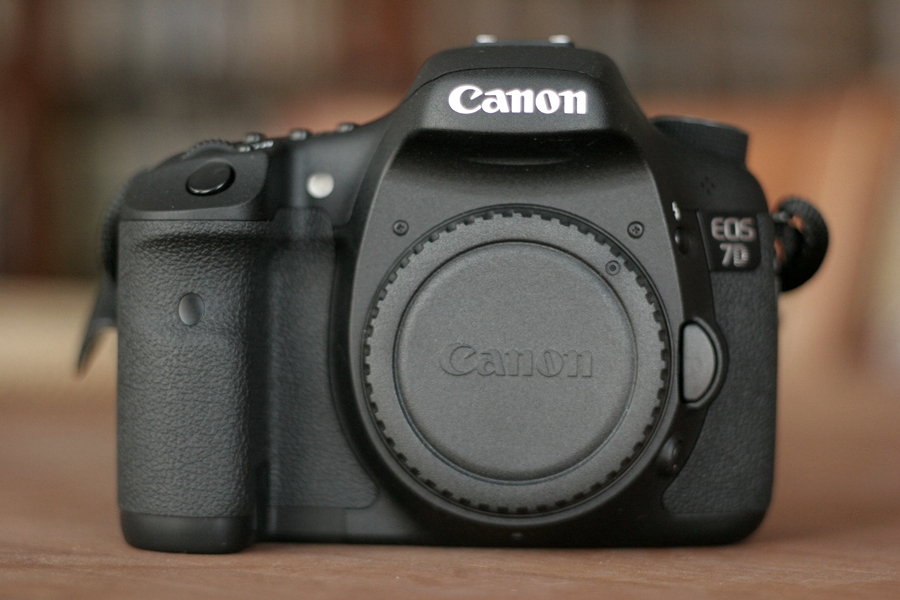
This new Canon 7D replaces my five-year-old Canon 20D, and finally, finally, gets my digital photography back to the resolution and color fidelity of the film cameras I used from 1983 to 2000. (The shot of my car from this morning came from the new 7D.) Take a look at this snapshot of how my cameras have evolved:
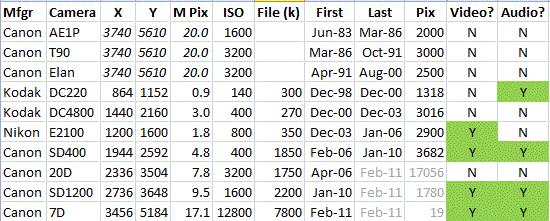
In 17 years I took about 9,000 photos on film. The 20D has shot over 17,000 and I'll keep using it for several thousand more. I expect to shoot even more than that with the new 7D.
I'll put the thing through its paces over the next few weeks, including testing out its video capabilities. It shoots full 1080p HD video, which I have never experienced with an SLR before. I'm giddy.
Via Sullivan, what happens in the House of Commons when a MP's tie starts to make unusual noises: